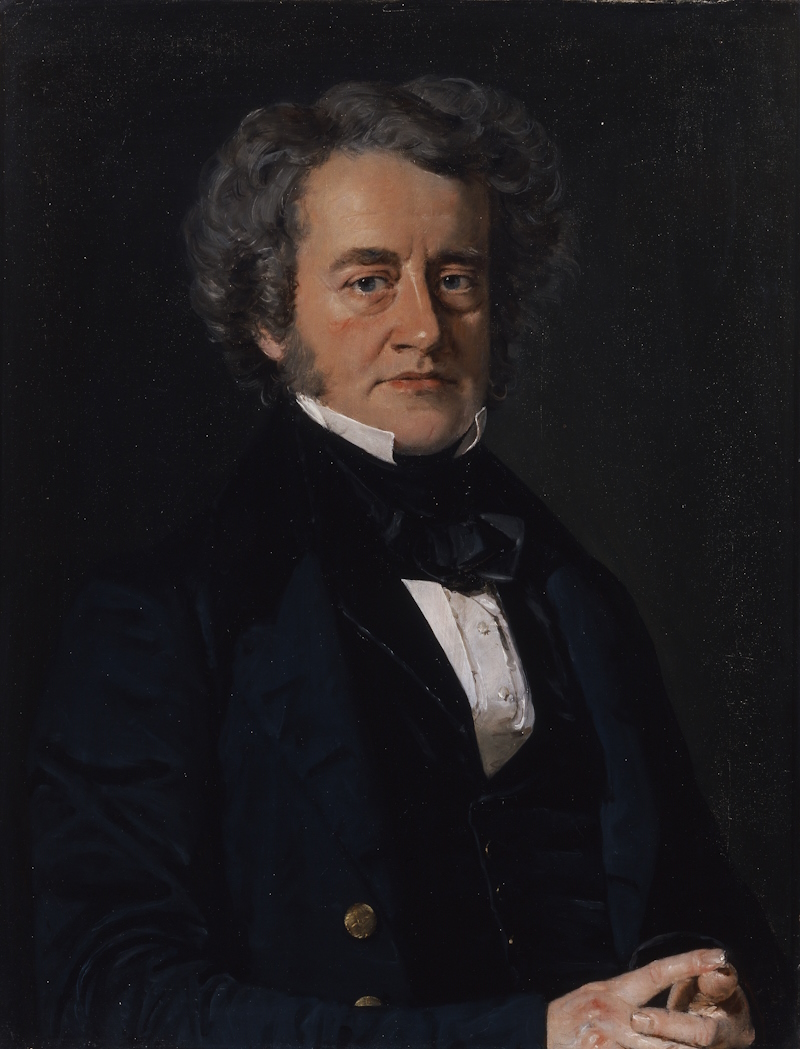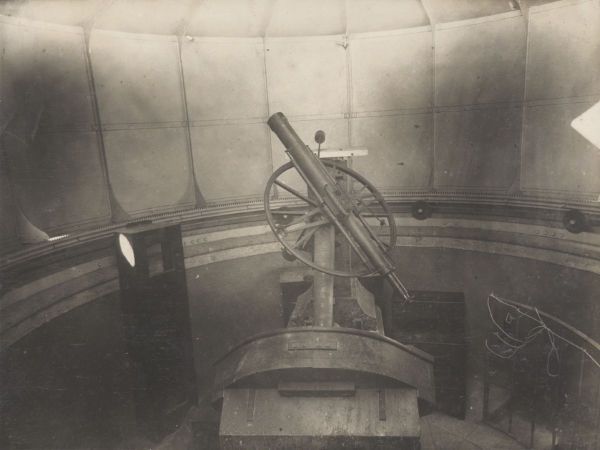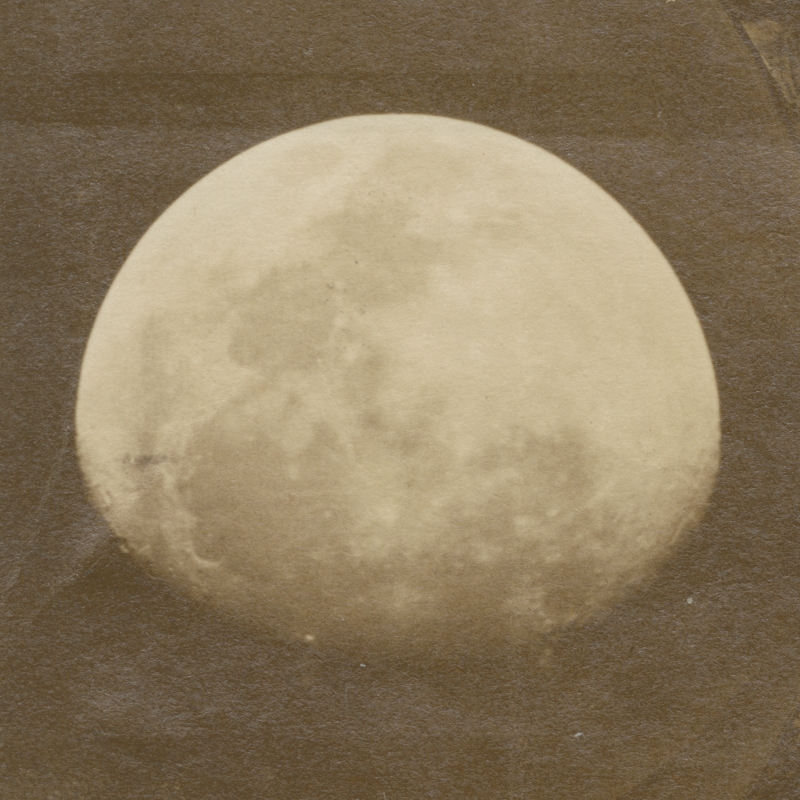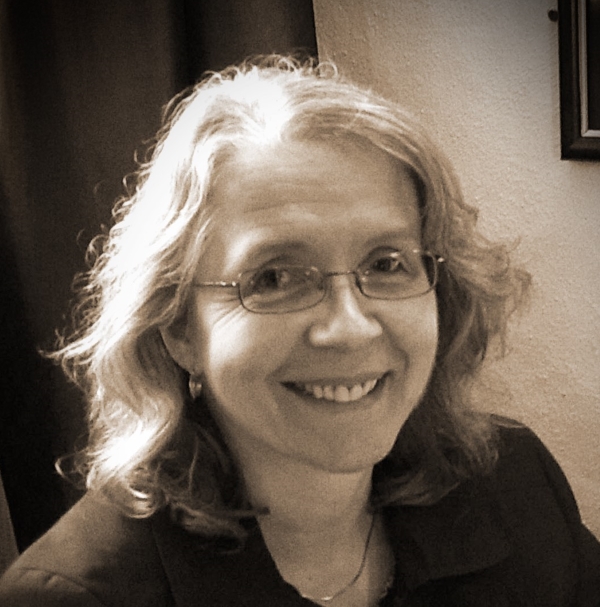Sir John Herschel’s careful management of his correspondence, and his central position in nineteenth-century science, make the Royal Society’s Herschel letters an invaluable archival resource, as Eloise Barber discovers during a major new digitisation project.
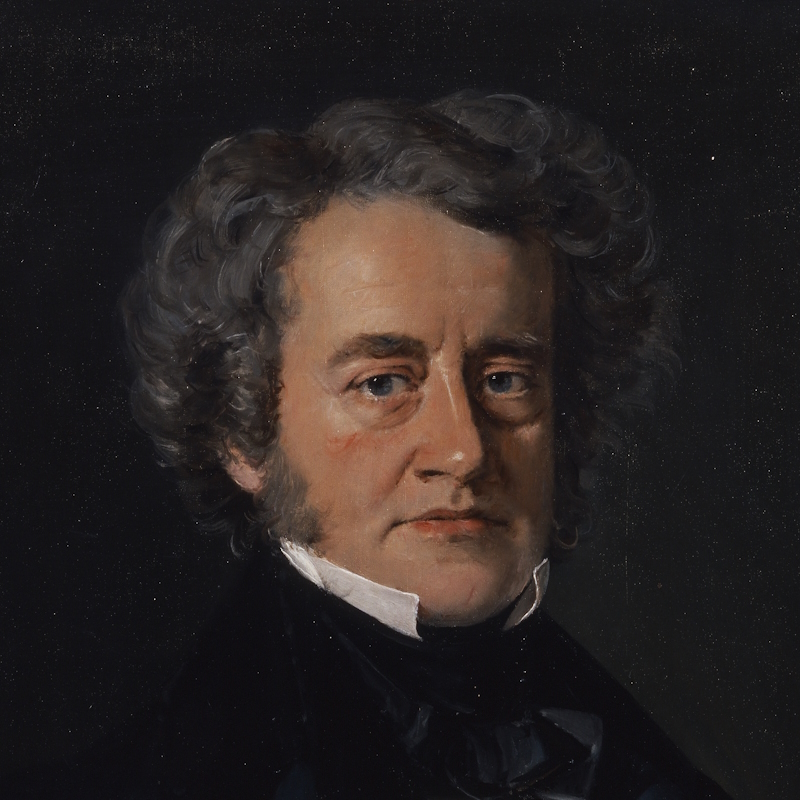
Before joining the Royal Society as Digitisation Coordinator, I didn’t know much about Sir John Frederick William Herschel (1792-1871) or his family. I’ve since immersed myself in a major new Herschel correspondence project, which has introduced me to one of the most important figures in nineteenth-century science.
Sir John Herschel contributed to the fields of mathematics, physics, photography and chemistry, the philosophy of science, and most notably astronomy. His father William Herschel (1738-1822) and his aunt Caroline Herschel (1750-1848) were astronomers themselves, with William discovering the seventh planet Uranus. It’s no surprise, then, that Sir John followed in their footsteps, co-founding the Royal Astronomical Society and continuing his father's research into the nature of nebulae. Sir John resided with his family in the Cape of Good Hope from 1834 to 1838, working on observations which eventually culminated in his authoritative work Outlines of astronomy (1849).
While Sir John Herschel was mainly known for his astronomy, he also contributed to physics, with an article discussing the wave theory of light published in the Encyclopaedia Metropolitana. His views on the philosophy of science, set out in A preliminary discourse on the study of natural philosophy (1830), had a strong influence on the contemporary scientific community. He also made significant contributions to the field of photography: he invented the cyanotype process and experimented with photosensitive emulsions of vegetable juices, publishing his findings in the Royal Society’s Philosophical Transactions in 1842.
As a result of his extraordinary aptitude across the sciences, he was elected to the Fellowship of the Royal Society in 1813 at the age of 21. Having the privilege of being immersed in the scientific community from an early age, Sir John Herschel maintained an extensive correspondence network with peers in the field. This served him well during his stint as Secretary of the Royal Society from 1824 to 1827.
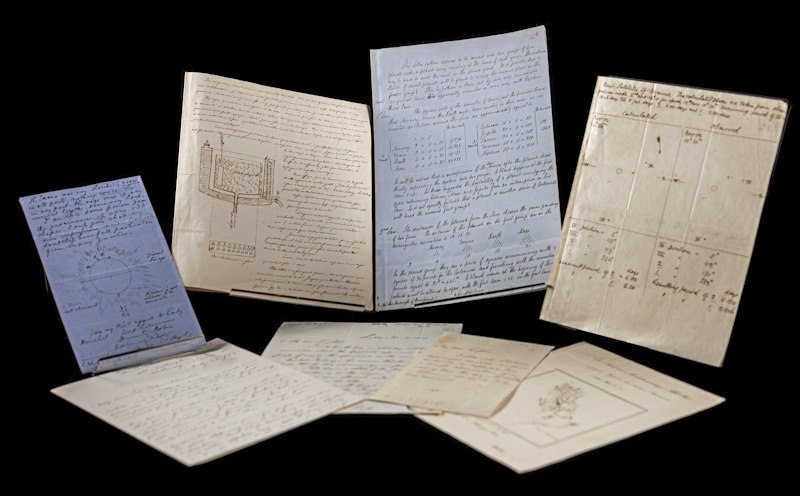
The combination of Sir John Herschel’s scientific excellence, his careful management of his correspondence, and his central position within a significant peer group in nineteenth-century science, means that the Royal Society’s Herschel Correspondence is an invaluable archival resource for today’s historians. The collection of over 10,900 letters is divided into three main groups: volumes 1-19 are manuscript letters that were sent to Herschel and drafts of his replies, volumes 20-24 are copies of Herschel’s original letters, and volumes 25-28 are unbound manuscript material.
In the first 19 volumes of the collection, you can see the range of Herschel’s interactions with other renowned scientists, and with other high-profile figures of the period. Some of the most notable names appearing in the correspondence are Charles Babbage, George Biddell Airy, Edward Sabine, Mary Somerville, Charles Lyell, Charles Dickens, Maria Edgeworth and Joanna Baillie. To capture the best quality images of their letters, we removed the manuscripts from the large guardbooks in which they had been mounted in the 1950s, following their donation to the Royal Society from the estate of the Reverend Sir John Frederick Charles Herschel (1869-1950), grandson of Sir John Herschel.
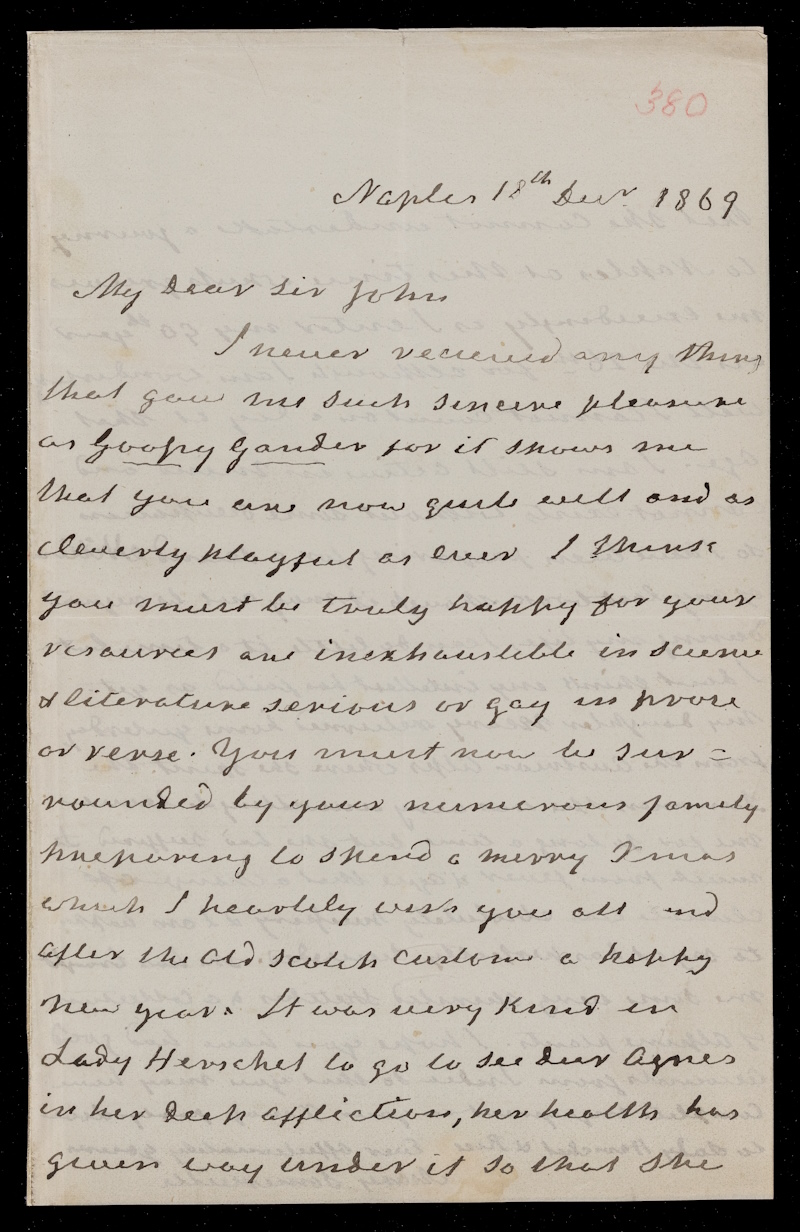 HS/16/380: Letter from Mary Somerville to Sir John Herschel, Naples, 18 December 1869
HS/16/380: Letter from Mary Somerville to Sir John Herschel, Naples, 18 December 1869
Volumes 20 to 24 are copies of Herschel's original letters, brought together by his son Colonel John Herschel (1837-1921), elected to the Fellowship of the Royal Society in 1871 and ‘distinguished as a practical Geodesist, and as a Mathematician’. These items were transcribed in the hope that a biography would be written one day. That hope was never realised, but our efforts in digitising the Herschel Correspondence will provide unprecedented access to this collection and help researchers discover untold stories.
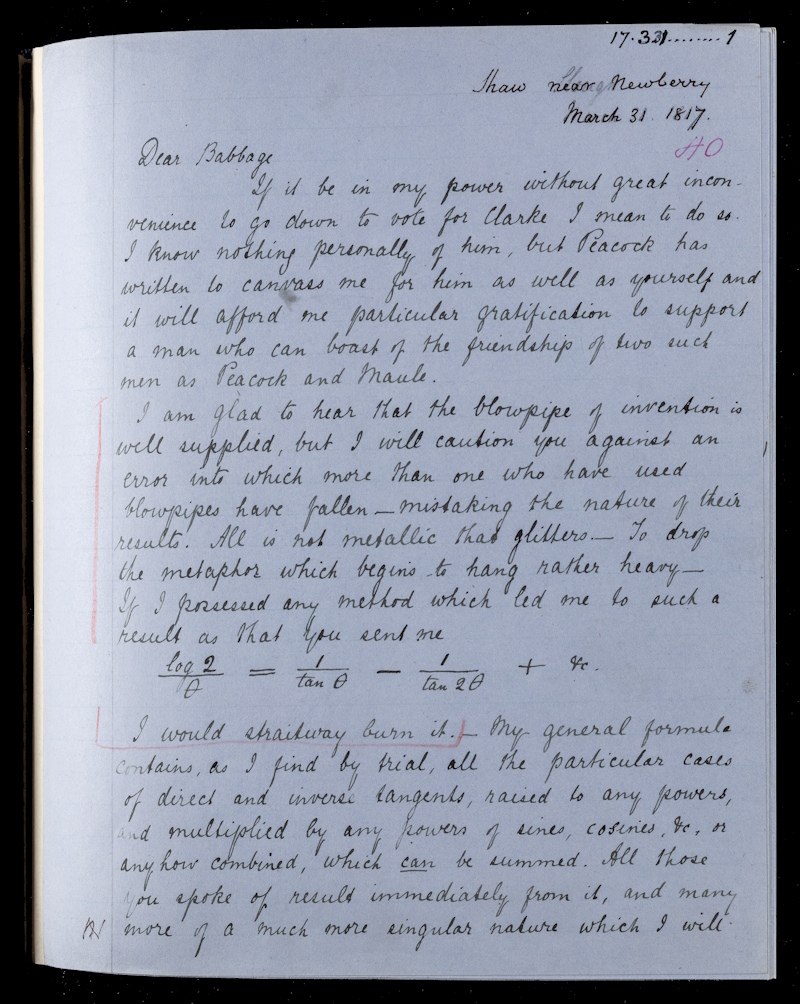 HS/20/40: Copy of a letter from Herschel to Babbage, 31 March 1817
HS/20/40: Copy of a letter from Herschel to Babbage, 31 March 1817
The Herschel Correspondence digitisation project was made possible by a grant from the Charles Hayward Foundation. All 10,900+ letters were imaged in high resolution by Bespoke Archive Digitisation. As Digitisation Coordinator, I’ve collated, migrated and quality-checked all images and metadata ready for launch, located creator and recipient names from the John Herschel Correspondence Calendar Database hosted by the Adler Planetarium and from Epsilon, and edited the names in our catalogue to provide users with detailed insights into the people in Herschel’s correspondence network.
Later this week, you’ll be able to see the results of all this work and discover the Herschel Correspondence for yourselves on our Science in the Making webpage, so watch this space!
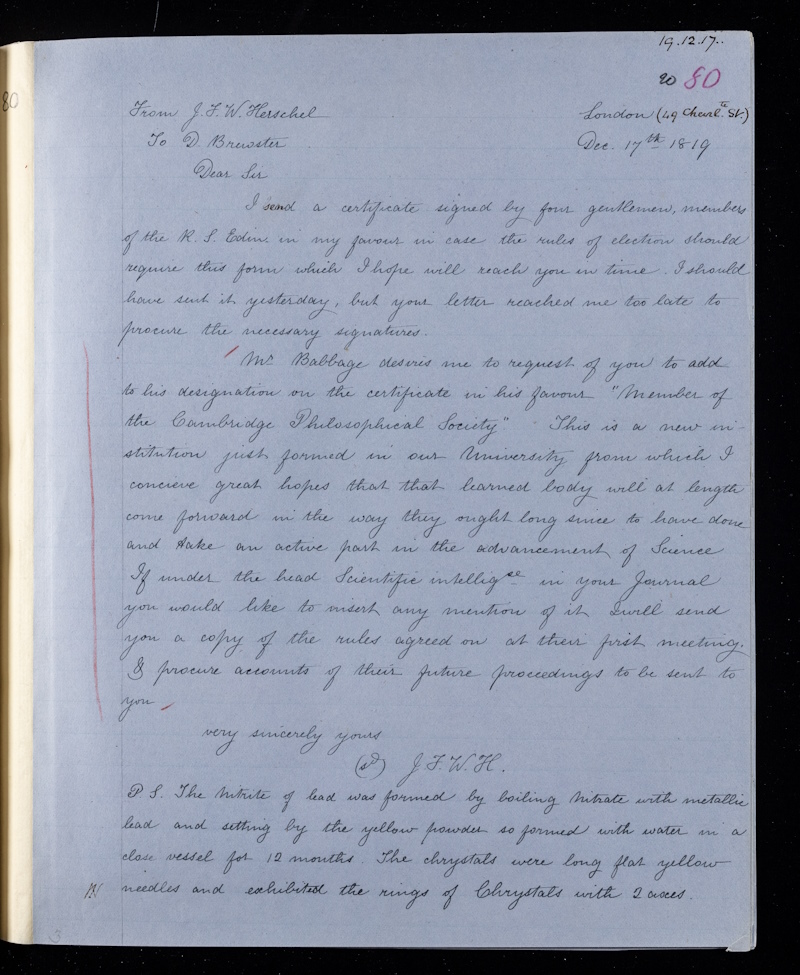 HS/20/80: Copy of a letter from Herschel to David Brewster, 17 December 1819
HS/20/80: Copy of a letter from Herschel to David Brewster, 17 December 1819

